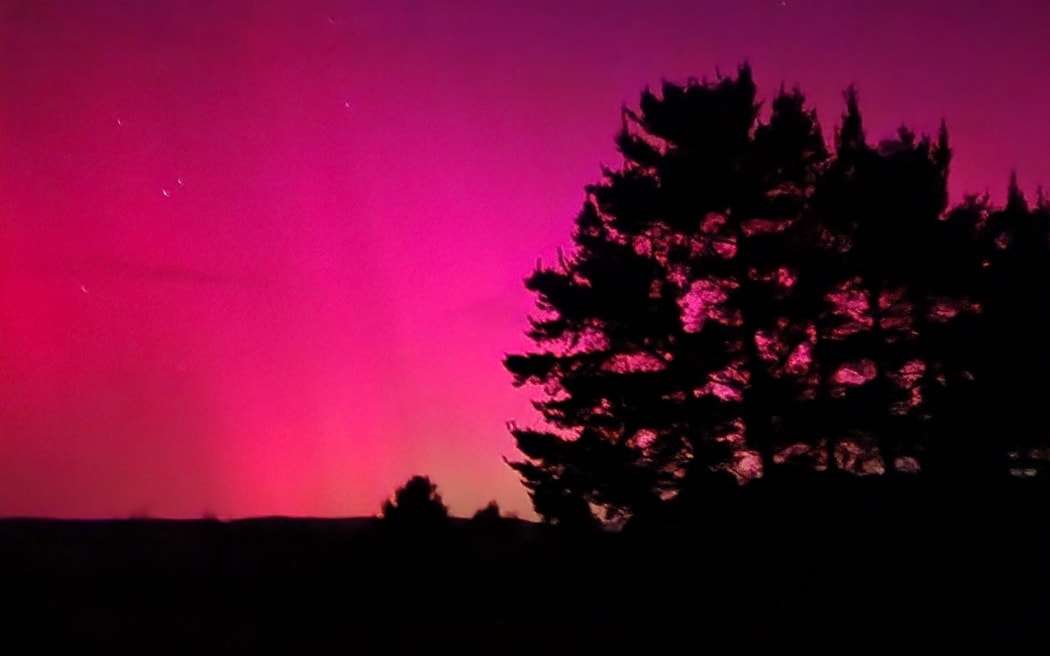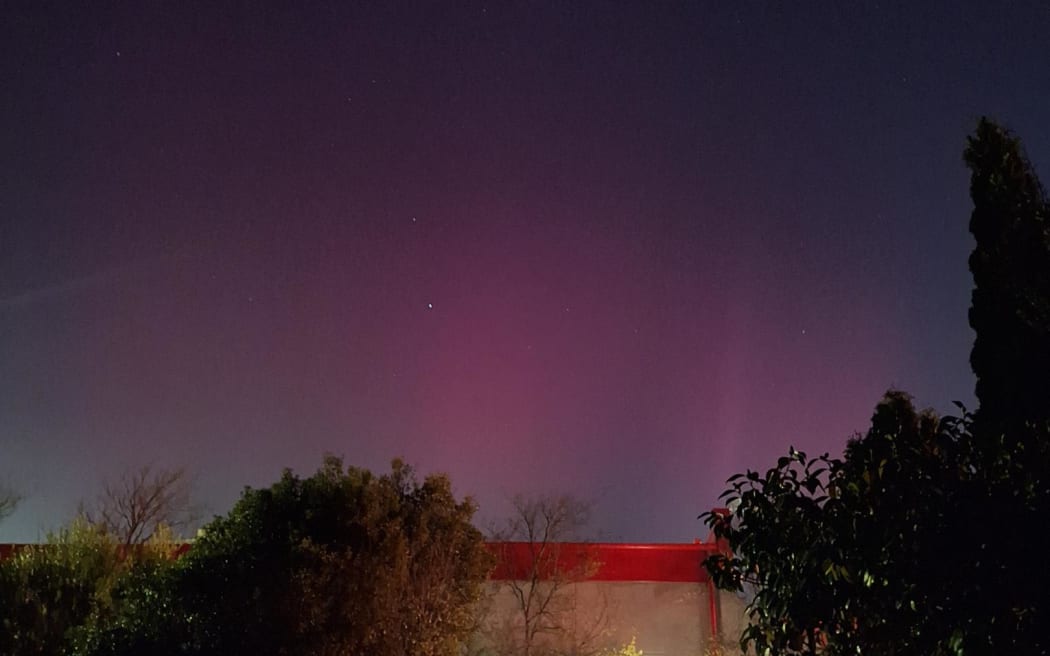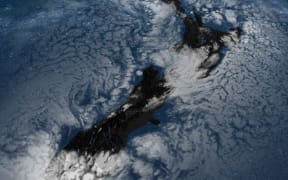
Aurora lights up the sky in Martinborough. = Photo: RNZ / John Gerritsen
An expert helping prepare New Zealand for the impacts of solar storms says Earth is in the middle of a pretty seriously big geomagnetic storm right now, but he stresses it is not an extreme event.
Material fired out from a sun spot, is crashing into the planet's atmosphere this weekend.
Did you take a photo tonight of the sky lit up? Send us an email: iwitness@radionz.co.nz
Transpower says it has put the electricity grid into a 'more' resilient state to protect equipment. It earlier issued a "grid emergency notice" though did not expect power supplies to be disrupted as a result of the storm.
Read more:
- Live solar storm updates: Transpower puts electricity grid into 'more' resilient state
- Northern Lights: US may get rare show this weekend due to solar storm
The storm was one of the most severe to strike Earth in decades and the US Space Weather Prediction Centre forecast severe conditions from 6-9pm (NZ time) on Saturday.
There have been many aurora displays in the Northern Hemisphere on Saturday (NZ time).

A pink sky in New Plymouth. Photo: RNZ / Robin Martin
Otago University physics professor Craig Rodger said at the moment it was exciting rather than scary.
Despite reaching G5 - the top of the NOAA SWPC scale for geomagnetic storms - Rodger said it has only just passed that threshold.
It was the largest such storm for more than a decade in New Zealand, he said, but not as big as those of 2003 or 2001.
And we had learned a lot since then, he said.
There have been many stunning aurora displays in the Northern Hemisphere over the last few hours!
— NIWA Weather (@NiwaWeather) May 11, 2024
As darkness nears in New Zealand, most regions have clear skies.
This bodes well for seeing the southern lights tonight as a G5 (extreme) solar storm continues. pic.twitter.com/PCHtI5bcZf
Rodger has been speaking with members of the electricity industry, who told him there were large but not concerning geomagnetically induced currents, particularly in hot spots such as Dunedin.
Peak currents have reached 60 amps; and magnetic field changes have peaked around 60-to-70 nanoteslas per minute (nT/min), he said.
That was much smaller than the big solar storm in November 2001 which knocked out a transformer in Dunedin, and magnetic field changes reached 200 nT/min.

The aurora over Eastgate mall, Christchurch...... Photo: RNZ / Georgie Hanafin
Rodger has been working on understanding and modelling the impacts of a severe solar storm on New Zealand's electricity grid.
As part of that work he has been helping Transpower prepare for extreme events tens of times larger than the current geomagnetic storm.
Those extreme events were expected to induce thousands of amps of excess electrical current, and magnetic field changes of 4000-5000nT/min.
The coronal mass ejections were expected to keep striking Earth over the next 24 hours or so, with disturbed geomagnetic conditions peaking Saturday afternoon and lasting until at least the end of Sunday.




